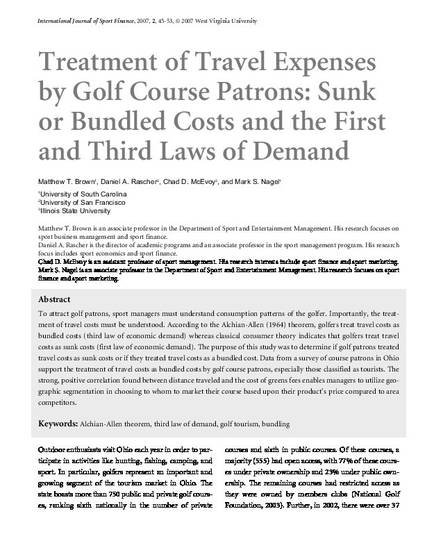
To attract golf patrons, sport managers must understand consumption patterns of the golfer. Importantly, the treatment of travel costs must be understood. According to the Alchian-Allen (1964) theorem, golfers treat travel costs as bundled costs (third law of economic demand) whereas classical consumer theory indicates that golfers treat travel costs as sunk costs (first law of economic demand). The purpose of this study was to determine if golf patrons treated travel costs as sunk costs or if they treated travel costs as a bundled cost. Data from a survey of course patrons in Ohio support the treatment of travel costs as bundled costs by golf course patrons, especially those classified as tourists. The strong, positive correlation found between distance traveled and the cost of greens fees enables managers to utilize geographic segmentation in choosing to whom to market their course based upon their product’s price compared to area competitors.
Available at: http://works.bepress.com/chad_mcevoy/2/

Article published in International Journal of Sport Finance, 2007, 2, 45-53, © 2007 West Virginia University